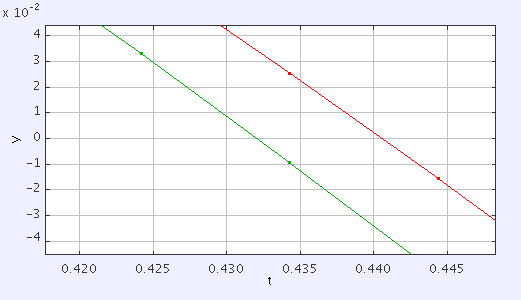Spinning bullets
Posted by David Zaslavsky on
While catching up on some old Mythbusters episodes, I ran across an interesting myth about spinning bullets. Apparently when you shoot a bullet into the surface of a frozen lake, it bounces backward, bounces over the ice a little way, and keeps spinning even after it comes to rest.
This is a very curious result. At first, it kind of seems to make sense. A bullet comes out of the gun spinning at 80000 revolutions per minute, according to the show, which is pretty fast. So it makes sense that it has a sizable amount of angular momentum, which in turn means it’ll take quite a bit of torque to stop it. Colliding with the ice conceivably might not be able to exert enough torque to do that, so the bullet would keep spinning.
But if that were the case, the bullet should maintain its orientation — it’d keep pointing in the same direction that it came out of the gun, because angular momentum is a vector quantity and it won’t change in either magnitude or direction without an external torque. That clearly wasn’t the case; the bullets the Mythbusters shot skittered across the ice, spinning in …


